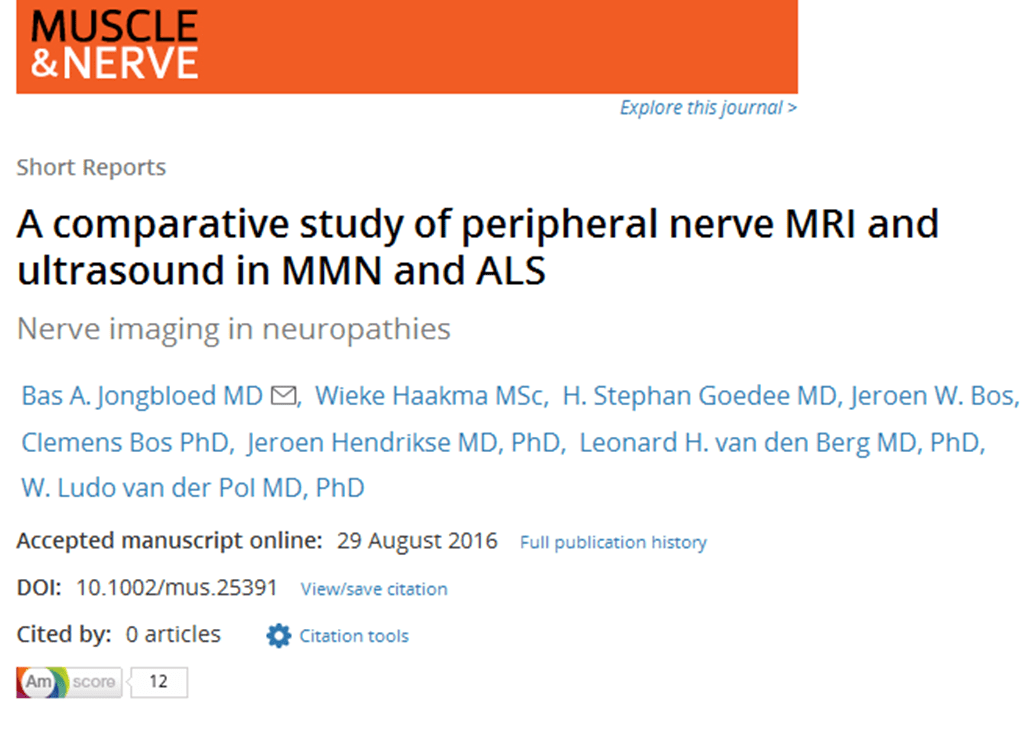 “A comparative study of peripheral nerve MRI and ultrasound in MMN and ALS” has been published in Muscle & Nerve. This research was supported in part by JPND through the STRENGTH project, selected for support in the 2012 risk factors call, and the SOPHIA project, selected for support in the 2011 biomarkers call.
“A comparative study of peripheral nerve MRI and ultrasound in MMN and ALS” has been published in Muscle & Nerve. This research was supported in part by JPND through the STRENGTH project, selected for support in the 2012 risk factors call, and the SOPHIA project, selected for support in the 2011 biomarkers call.
Tag Archives: ultrasound
Ten international JPND working groups recommended for funding
The EU Joint Programme – Neurodegenerative Disease Research (JPND) has released the results of a “rapid-action” call to support working groups of leading scientists to bring forward novel approaches that will enhance the use of brain imaging for neurodegenerative disease research.
Ten working groups have been recommended for funding to address the methodological challenges facing different imaging modalities, among them MRI, PET, ultrasound, MEG and EEG, as well as multimodal approaches. The working groups cover a range of neurodegenerative diseases, including Alzheimer’s disease, Parkinson’s disease, Frontotemporal dementia and Huntington’s disease.
“Brain imaging has made enormous progress in recent years and is currently one of the most promising avenues in neurodegenerative disease research,” said Professor Thomas Gasser, Chair of the JPND Scientific Advisory Board. “If we can solve the challenges in the field, brain imaging could rapidly lead to faster and better diagnoses as well as a deeper understanding of the fundamental aspects and mechanisms of neurodegeneration.”
Although imaging techniques have brought about a dramatic improvement in the understanding of neurodegenerative diseases, there remain a number of significant challenges in the field. These include the execution of multi-centre clinical trials of an unprecedented scale, data transfer across imaging centres and the use of imaging for diagnostics and for measuring clinical outcomes.
To address these questions, on January 8, 2016, JPND launched a call for community-led working groups on harmonisation and alignment in brain imaging methods. The proposals recommended for funding are for top scientists to come together and propose, through ‘best practice’ guidelines and/or methodological frameworks, how to overcome key barriers to the use of imaging in neurodegenerative disease research.
The call attracted proposals with partners from across Europe and beyond, including Asia, Australia, North America and South America. A notable number of groups based in the United States were involved in responses to the call. Funding decisions were based upon scientific evaluation and recommendations to sponsor countries by a JPND peer review panel.
“This call perfectly embodies JPND’s mission and objectives,” said Professor Philippe Amouyel, Chair of the JPND Management Board. “The purpose of JPND is to strengthen coordination and collaboration in neurodegenerative disease research across different countries. We want to ensure that research efforts are not duplicated, to build consensus and to accelerate a path toward a cure that works. This call convenes groups of leading experts to hammer out the hard questions, including the challenges of interoperability and shared and open data, to allow researchers to more rapidly and more fully exploit imaging techniques going forward.”
Each working group is expected to run for a maximum of 9 months. The outputs of the working groups are to be produced by the end of the funding period, and will be published on the JPND website and used for further JPND actions. In addition, a common workshop will be organised to bring together and present the recommendations of each working group, encouraging the further exchange of ideas and wider dissemination to different stakeholder groups.
For more information on the working groups recommended for funding, click here.
The blood-brain barrier has been non-invasively opened in a patient for the first time. Scientists used focused ultrasound to enable temporary and targeted opening of the blood-brain barrier (BBB).
Opening the blood-brain barrier in a localized region to deliver chemotherapy to a tumor is a predicate for utilizing focused ultrasound for the delivery of other drugs, DNA-loaded nanoparticles, viral vectors, and antibodies to the brain to treat a range of neurological conditions, including various types of brain tumors, Parkinson’s, Alzheimer’s and some psychiatric diseases.
The team infused the chemotherapy agent doxorubicin, along with tiny gas-filled bubbles, into the bloodstream of a patient with a brain tumor. They then applied focused ultrasound to areas in the tumor and surrounding brain, causing the bubbles to vibrate, loosening the tight junctions of the cells comprising the blood-brain barrier and allowing high concentrations of the chemotherapy to enter targeted tissues.
While the current trial is a first-in-human achievement, Dr. Kullervo Hynynen, senior scientist at the Sunnybrook Research Institute, has been performing similar pre-clinical studies for about a decade. His research has shown that the combination of focused ultrasound and microbubbles may not only enable drug delivery, but might also stimulate the brain’s natural responses to fight disease. For example, the temporary opening of the blood-brain barrier appears to facilitate the brain’s clearance of a key pathologic protein related to Alzheimer’s and improves cognitive function.
Source: Focused Ultrasound Foundation
